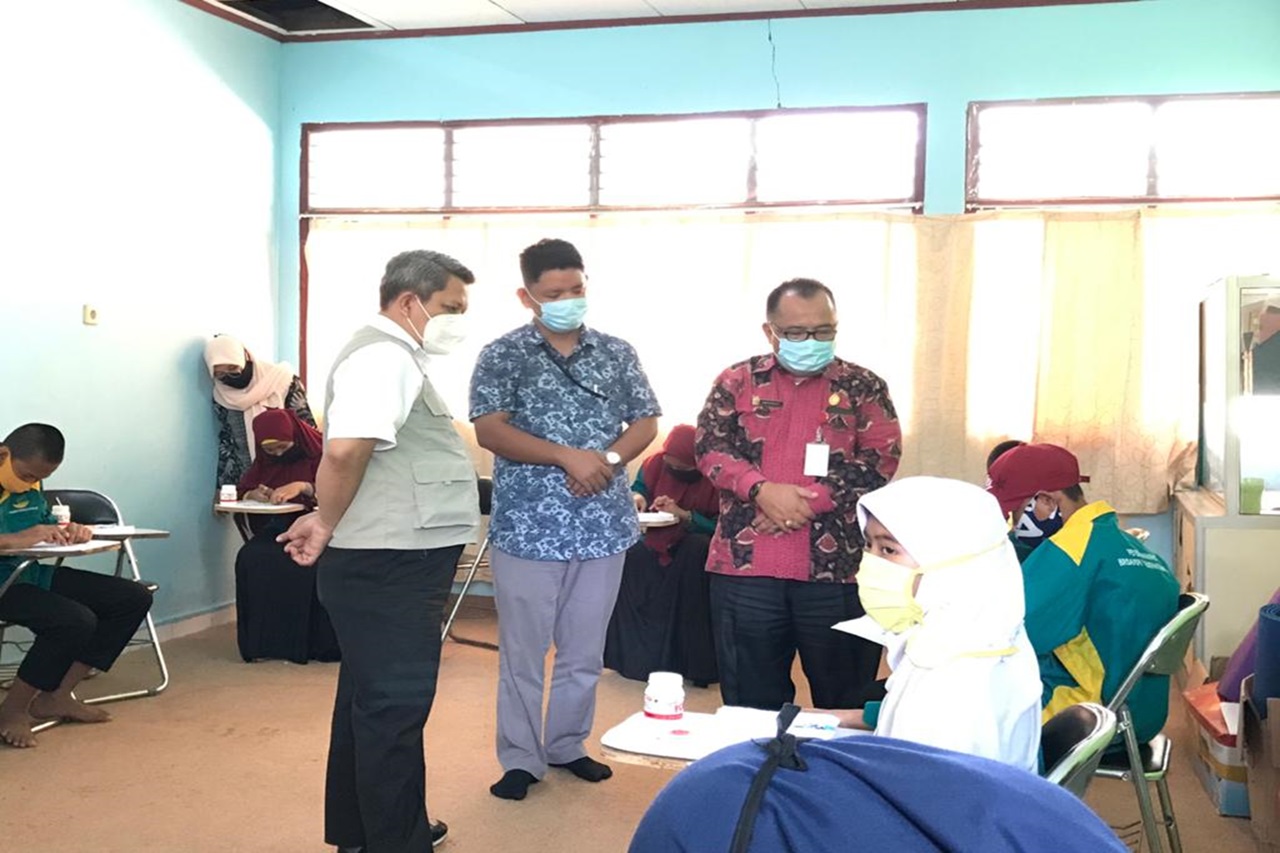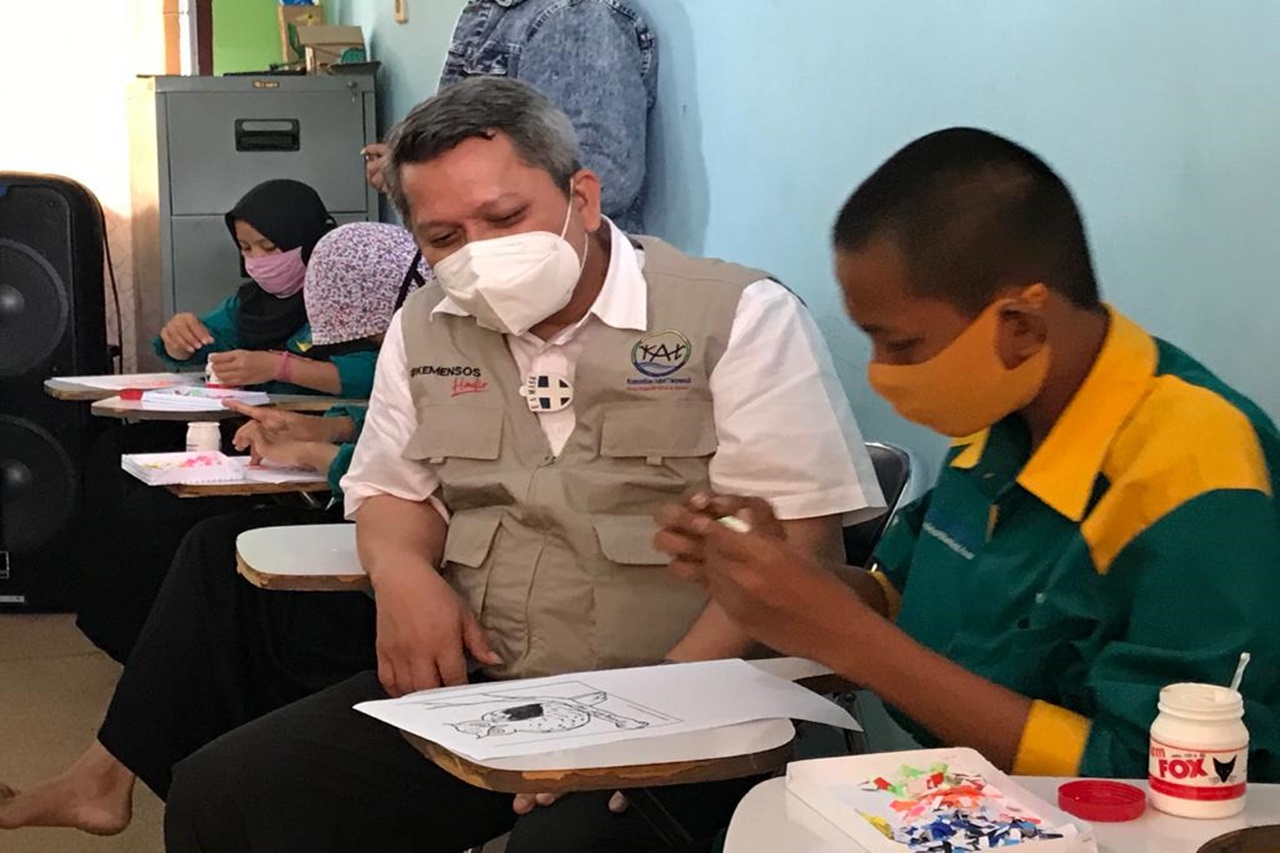Writer :
Humas Alyatama Jambi
Editor :
David Myoga
Translator :
Intan Qonita N
JAMBI (October 20, 2020) — The “Alyatama” Children's Center is a Technical Implementation Unit (UPT) owned by the Ministry of Social Affairs which aims to provide social rehabilitation services to AMPK (Children Needing Special Protection). Children from minority and isolated groups are included in the AMPK category based on Article 59 of Law no. 35 of 2014 concerning Child Protection. One of the manifestations of children from minority groups is children from Remote Indigenous Communities (KAT).
Departing from this, “Alyatama” Children's Center had the opportunity to be one of the objectives of field visits held by the Directorate of Poverty Reduction and Community Empowerment, Ministry of National Development Planning / National Development Planning Agency (BAPPENAS) and the team of the Directorate of Remote Indigenous Community Empowerment, Indonesian Ministry of Social Affairs.
The purpose of a field visit to the "Alyatama" Children's Center is to get a comprehensive picture of the conditions experienced by AMPK, especially from KAT who have or are undergoing social rehabilitation services.
Arriving at the "Alyatama" Children's Center, the field visit team was accompanied by the Head of the Center, Lifyarman, Head of Sub-Division of Administration, Viking Rizarta, and Head of the Social Rehabilitation and Services Section, Nurhasanah Seprianita, toured the activities carried out by beneficiaries and facilities in the Center environment.
The beneficiaries who were participating in art therapy activities managed to attract the attention of La Ode Taufik Nuryadin as Director of Remote Indigenous Community Empowerment and Maliki as Director of Poverty Reduction and Community Empowerment, to stop at the Skills Room and have a chat together.
La Ode approached 'R' who was busy arranging pieces of origami paper following the image of an owl in front of him. His eyes shone when asked what he wanted to be in the future.
"Want to be a mechanic, sir," answered 'R' confidently.
The social worker who accompanied the beneficiary's activities explained to La Ode and Maliki what routine activities the beneficiaries participated in while in the hall. Jerikson as a Social Worker explained that art therapy also aims to hone the creativity and perseverance of the beneficiaries in following the instructions given.
Moving from the Skills Room, the team and the office went around to see the condition of the beneficiary dormitories and the Safe House. Lifyarman explained that the placement of beneficiaries into dormitories is determined based on the type of cluster.
“This grouping of dormitories aims to create a comfortable atmosphere for the beneficiaries. For example, a child who is a victim can occupy a dormitory with a partition so that the child feels he has privacy to heal his trauma," said Lifyarman.
Continuing Lifyarman's explanation, Viking Rizarta explained that the Education Building located near the Safe House needed repairs to support service activities for AMPK. This is in line with the preparation for the ATENSI program in 2021 where the building can be a shelter and has a multipurpose room.
The field visit team will then continue their journey to Sukajadi Village, Sarolangun Regency and Pelakar Jaya Village, Merangin Regency to carry out data collection and monitoring of ownership of population documents and indigenous peoples and KAT.
This field visit is expected to be the beginning of coordination in providing services, especially to KAT children who need social rehabilitation services.
The field visit team will then continue their journey to Sukajadi Village, Sarolangun Regency and Pelakar Jaya Village, Merangin Regency to carry out data collection and monitoring of ownership of population documents and indigenous peoples and KAT.
This field visit is expected to be the beginning of coordination in providing services, especially to KAT children who need social rehabilitation services.
Share :
 English
English
 Bahasa
Bahasa



